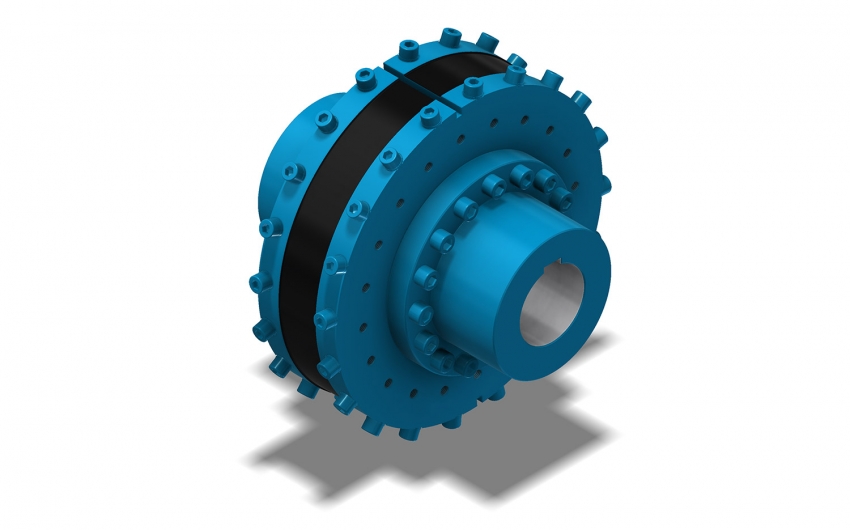MOJ S.A.
Tokarska 6 Street, 40-859 Katowice
T: +48 (32) 604 09 00
F: +48 (32) 604 09 01
E: sekretariat@moj.com.pl
The primary application of elastic couplings of the GIGANT type is to connect an electric drive motor to a transmission shaft in drives for belt and scraper conveyors, compressors, pumps, fans, and other devices.



These couplings are characterized by a compact design. They can be used wherever the disassembly of the motor is difficult. The elastic segment of type "F" can be replaced without removing the coupling from the drive system. These couplings effectively dampen changing dynamic torques. However, they require a more precise alignment of the drive system.
They can be used in machinery intended for operation in underground mines of methane explosion classes a, b, c, and coal dust explosion classes A and B, provided that machines with built-in couplings have undergone a type examination according to the WE directive.
The primary application of GIGANT type elastic couplings is to connect an electric drive motor to a gearbox shaft in drives for belt conveyors, scrapers, compressors, pumps, fans, and other equipment. It is recommended to use them wherever disassembling the motor is difficult. The flexible segment can be replaced without removing the motor from the drive system.
| Couplingtype MOJ (mechanical size) | 4 | 8 | 16 | 32 | 50 | 75 | |
|---|---|---|---|---|---|---|---|
| Transmitted power (1500 rpm) | kW | 55 | 100-132 | 200 | 315 | 500 | 750 |
| Maximum rotational speed | min -1 | 3000 | 3000 | 3000 | 3000 | 3000 | 1500 |
| Rated torque | Nm | 560 | 760 | 1610 | 3220 | 3000 | 4000 |
| Acceleration torque | Nm | 1680 | 2280 | 4830 | 9660 | 8000 | 10000 |
|
Angular deformation of the couplingat rated torque |
(°) | ok. 5 | ok. 6 | ok. 6,5 | ok. 7 | ok. 5 | ok. 5 |
| Axial assembly deviation ΔP (for the construction site) |
mm | 1–1,5 | 1–1,3 | 1–1,3 | 1–1,3 | 1–1,5 | 1–1,5 |
| Installation offset, radial offset ΔPr | mm | 1,5 | 1,5 | 1,5 | 1,5 | 1,5 | 1,5 |
|
Permissible inclination angle of the couplinghalves axis |
(°) | 1,5 | 1,5 | 1,5 | 1 | 1 | 0,8 |